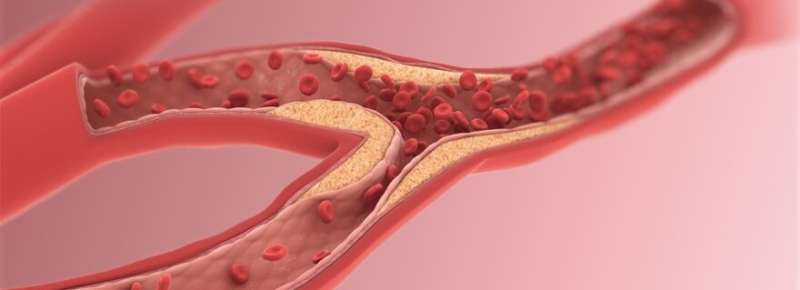This article has been reviewed according to Science X's editorial process and policies. Editors have highlighted the following attributes while ensuring the content's credibility:
fact-checked
trusted source
proofread
Why arteriosclerosis looks like an autoimmune disease

Arteriosclerosis bears great similarities to autoimmune diseases. Researchers from Leiden University show this in a new study they published in the journal Nature Cardiovascular Research. "This discovery suggests that treatment methods for autoimmune diseases might also be effective in preventing and treating cardiovascular diseases," said medicine researcher Bram Slütter.
Autoimmune diseases such as multiple sclerosis (MS), rheumatism and type I diabetes arise because the immune system attacks the body's own proteins. Patients suffering from autoimmune diseases are therefore often treated with drugs that inhibit the immune system.
Recent clinical research shows that inhibiting inflammatory cells can also be effective in cardiovascular diseases, significantly reducing the risk of heart attacks and strokes. The researchers in Leiden therefore wondered whether arteriosclerosis might also be an autoimmune disease.
In collaboration with the UMC Utrecht, Amsterdam UMC and The Hague hospital HMC Westeinde, they analyzed the inflammatory cells in blood and arterial calcification tissue of patients undergoing carotid artery surgery. One type of immune cell stood out: the so-called helper T cell, which plays a central role in the development of autoimmune diseases.
This cell was remarkably active in tissue affected by arterial calcification. The cell resembled helper T cells from psoriatic arthritis patients like two peas in a pod. So, it seems very likely that the same type of T-cell that causes psoriatic arthritis also plays a role in the development of cardiovascular disease.
That helper T-cells play a harmful role in autoimmune diseases had long been known and for rheumatoid arthritis and type I diabetes, several therapies are already in development to eliminate these harmful T-cells. The discovery that these cells are also involved in the development of arteriosclerosis also makes developing such a therapy for cardiovascular diseases attractive.
We're not there yet, Slütter explains. "We first need to investigate exactly which protein the helper T cells attack. Identification of this is crucial. Only then can you develop a treatment that turns off the T cells, leaving the rest of the immune system unaffected."
More information: Marie A. C. Depuydt et al, Single-cell T cell receptor sequencing of paired human atherosclerotic plaques and blood reveals autoimmune-like features of expanded effector T cells, Nature Cardiovascular Research (2023). DOI: 10.1038/s44161-022-00208-4



















